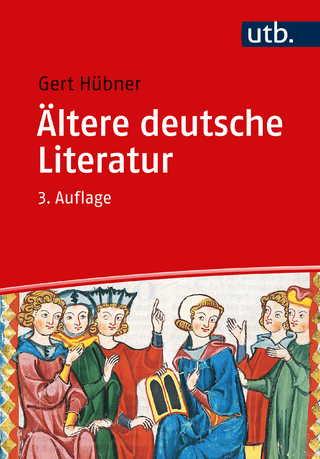
The Politics of Obscenity in the Age of the Gutenberg Revolution
Routledge (Verlag)
978-0-367-53735-7 (ISBN)
What does obscene mean? What does it have to say about the means through which meaning is produced and received in literary, artistic and, more broadly, social acts of representation and interaction? Early modern France and Europe faced these questions not only in regard to the political, religious and artistic reformations for which the Renaissance stands, but also in light of the reconfiguration of its mediasphere in the wake of the invention of the printing press. The Politics of Obscenity brings together researchers from Europe and the United States in offering scholars of early modern Europe a detailed understanding of the implications and the impact of obscene representations in their relationship to the Gutenberg Revolution which came to define Western modernity.
Peter Frei teaches French and Comparative Literature at the University of Fribourg (Switzerland). Nelly Labère is Associate Professor (Maître de conférences HDR) at the University of Bordeaux Montaigne (France).
Introduction: The Obscenity of Books: The Politics of the Obscene in Early Modern Print Culture Part 1: Obscene Means: What It Means to Be Obscene Obscene Materials in Manuscript Culture and Early Prints 1. The Politics of Obscenity in Les Monstres des hommes, a Thirteenth-Century Manuscript 2. The "Hermaphrodite" of Modena: The Confusion That Made Her Disonesta (Twelfth to Sixteenth Centuries) 3. X-Rated Letters: When the ABC Turns You On 4. Courtly Obscenities Between the Middle Ages and the Renaissance: From the "Forest de Longue Attente" to the Rondeaux and Ballads of the "Gaudisseur Amant" in La Chasse et le Départ d’Amours (Paris, Vérard, 1509) 5. Even in Latin… Deterritorializations of the Obscene Shifting Obscenities, from Manuscript to Print 6. To Be or Not to Be Part of the Cent Nouvelles Nouvelles: Representing the Obscene in Manuscript and Print 7. Villon’s Imprint: Obscenity and Vulgarity in the Early Age of Print Part 2: Obscene Expositions: Obscenity and Renaissance Print Culture Impressions of the Body: The Genres of Renaissance Obscenity 8. From Panurge to Pan: Rabelais’s Fictions of Undiplomatic Diplomacy and the Ambassador’s Pleasure 9. Sentimental Obscenity 10. Les Blasons anatomiques du corps feminin and the Fabrication of Nudity. Appendix to Chapter 10: An Unpublished Counter-Blazon "by a Young Woman" The Religious Ob-Scene: Towards a Politics of Obscenity 11. Performing Protestant Identity Through Obscene Poetry: The Grenet Manuscript in the Age of the Printing Press 12. Pathways to the Obscene in Calvin and Calvinism 13. Obscenity on the Stage: A Double-Edged Sword Part 3: Impressions and Reimpressions of an Obscene Modernity The Language in Question or the Trouble with Words 14. "Libertinage de langue" and Gender Legislation: The Indecent Mobility of Signs 15. The Obscene, the Word, the Thing: Methodological Questions Afterlives: On the History of Obscene Books 16. Publishing Obscene Parodies. From Authorized Joyful Books to Forbidden Editions 17. Between the Early Modern and the Modern: The Resonance of Aretino. Epilogue: The Obscene Remains of the Past
| Erscheinungsdatum | 04.01.2022 |
|---|---|
| Reihe/Serie | Routledge Research in Early Modern History |
| Zusatzinfo | 3 Tables, black and white; 1 Line drawings, black and white; 6 Halftones, black and white; 7 Illustrations, black and white |
| Verlagsort | London |
| Sprache | englisch |
| Maße | 152 x 229 mm |
| Gewicht | 453 g |
| Themenwelt | Geschichte ► Allgemeine Geschichte ► Mittelalter |
| Geschichte ► Allgemeine Geschichte ► Neuzeit (bis 1918) | |
| Geschichte ► Teilgebiete der Geschichte ► Kulturgeschichte | |
| ISBN-10 | 0-367-53735-4 / 0367537354 |
| ISBN-13 | 978-0-367-53735-7 / 9780367537357 |
| Zustand | Neuware |
| Haben Sie eine Frage zum Produkt? |
aus dem Bereich


